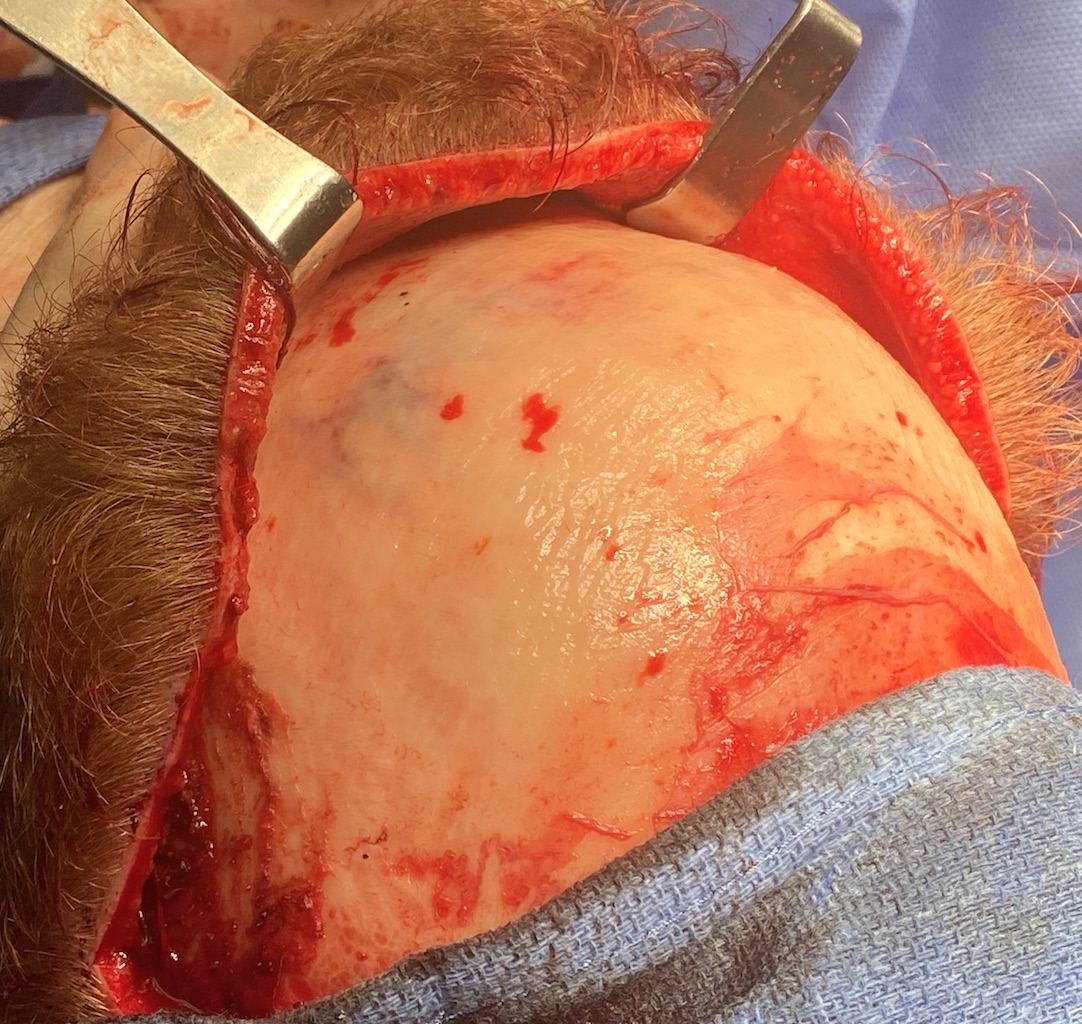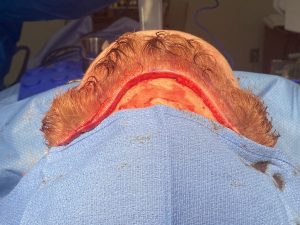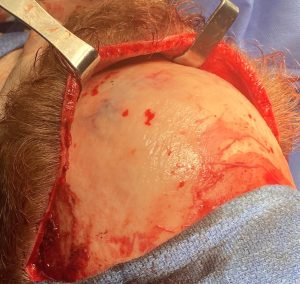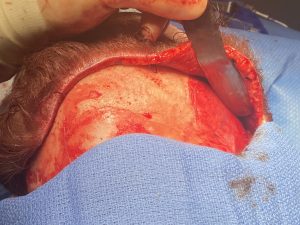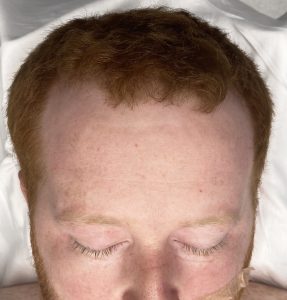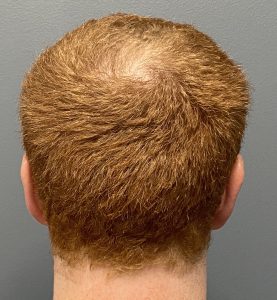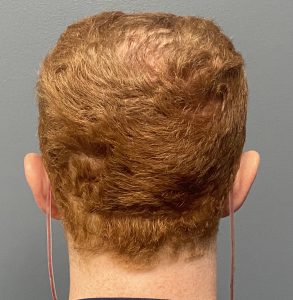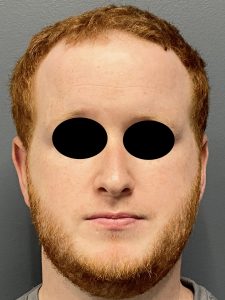Background: Frontal bossing is usually an isolated aesthetic skull deformity. Similarly excessive head width/convexity is often also a localized head shape issue. But there are some patients where the two are related and are part of an overall larger and wider head. The width created by the frontal bossing extends over onto the side of the head where the temporal bone is wider and the temporal muscle is thicker. When significant enough this creates what is unflatteringly called the lightbulb-shaped head.
While isolated traditional temporal reduction and frontal bossing reduction would be beneficial it does not provide the most complete correction or maximal head narrowing effect. But to do so a more open exposure is needed that the limited incisions that are used in traditional forehead and temporal reductions do not allow.
As much as I try and refrain from using a coronal scalp incision in any form of aesthetic skull reshaping, which in my terminology means any superior scalp incision that crosses the bony temporal line and extends down onto the sides of the head, there are cases where its tradeoff may be worth it. This is, of course, if the patient also feels that it is worth for them.
Case Study: This male was bothered by his large head shape which was evidenced by frontal bossing, a wide convex side of the head and a prominent occipital knob. He wanted maximal head width reduction and was willing to have a hemicoronal scalp incision to do so.
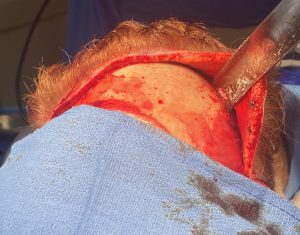
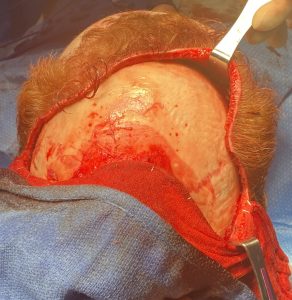
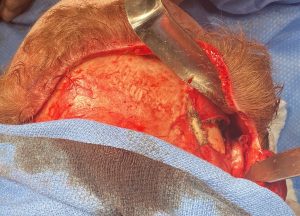
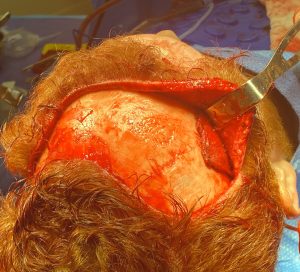
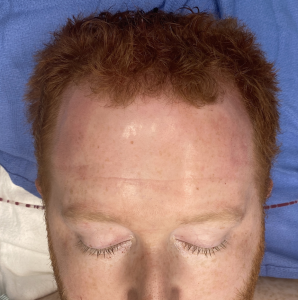
In the side view the frontal bossing reduction was more modest given the naturally thinner forehead bone.
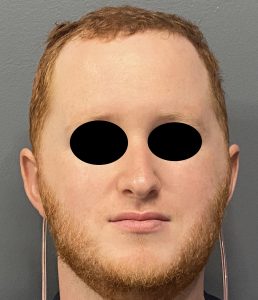
Most head narrowing procedures are done with more limited exposure from postauricular incisions which do not permit any bone reductions. Fortunately most head narrowing patients don’t need it and the muscle removal is enough. Similarly most frontal bossing reductions are done through a limited frontal hairline incision. But lack of a good frontal hairline and a frontal hairline that is sent back behind the turn of the forehead makes a limited frontal scalp incision useless for any significant forehead reduction. In this exception case the patient was willing to use a much longer scalp incision to achieve the maximal front and side of the head reductions.
Case Highlights:
1) Maximal narrowing the wide head consist of both muscle and bone reductions done through a superior scalp incision.
2) Complete posterior temporal and subtotal anterior muscle thinning with fascial resuspension maximizes soft tissue side of the head reduction.
3) Bony forehead, temporal line and parieto-temporal skull reductions maximize the bony side of the head reductions.
Dr. Barry Eppley
World-Renowned Plastic Surgeon

